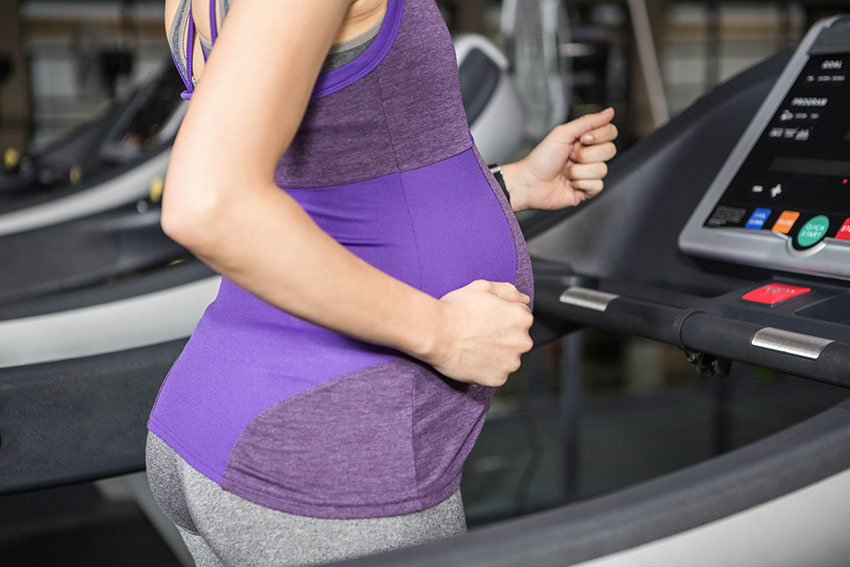Pregnant runners' pain varies

An AUT-Canterbury-Waikato University collaborative study of more than 3,100 pregnant runners from 25 countries has found key differences in the pain of pregnant runners, depending on whether they’ve previously had children.
A multidisciplinary team of four biomechanists (study co-authors Dr Hannah Wyatt, Dr Sheerin, Professor Patria Hume, Dr Kim Hébert-Losier), two physiotherapists, a midwife and a pregnant woman who ran during pregnancy, developed the survey as part of Te Kukunetanga: Developing Cycle of Life Research Programme - SPRINZ - AUT.
The study, recently published in the International Sports Medicine Journal, found 86% of pregnant runners reported pain while running, primarily in their lower back, pelvis, breasts and hips.
Women who had previously had children were more likely to suffer from pelvis, lower back, hip and knee pain, while first-timers were more likely to have breast pain, findings which can be taken into account by medical practitioners when developing pain prevention strategies.
Te Kukunetanga co-lead Dr Hannah Wyatt, an AUT research associate and now a lecturer at Canterbury University, said: “40% of surveyed women experienced breast pain when running during pregnancy. A novel finding was that women with a previous child were less likely to experience breast pain than those running during their first pregnancy.
“During a woman’s first pregnancy, a complete remodeling of breast tissue occurs that does not return to the pre-pregnancy state post-lactation. Women can experience pain as a result of this process which may be more prominent during dynamic movement such as running. Ensuring adequate breast support during running, particularly for women in their first pregnancies, may help reduce instances of pain, as has been found in other research studies for women with larger breasts,” said Dr Wyatt.
While having a previous child reduced the risk of breast pain, it increased the risk of pain at the pelvis, hip, knee and lower back, likely due to an altered running gait. Gait training to reduce joint loads could help address this.
Dr Wyatt said as pelvis and breast pain were the greatest musculoskeletal barriers to the continuation of running during pregnancy, pain prevention strategies should prioritise those body sites. “We hope that this study will help inform healthcare education to support women who wish to be able to engage in running during pregnancy, and for longer.”
Dr Kelly Sheerin, Department Head of Sport and Exercise Science at AUT, said physical activity was beneficial during pregnancy yet less than a third of pregnant people met the minimum recommendations of 150 minutes of moderate activity per week.
“Enabling pregnant women with uncomplicated pregnancies to continue physical activity can enhance their health and lower the risk of complications during childbirth. Yet there is very little data out there about the impact of running during pregnancy.
“In the survey, most (72%) were experienced runners, about a quarter were recreational and the remainder were novices. They ranged in age from 24 to 54 and had between one and seven children,” said Dr Sheerin.
The survey also looked at running schedules. Participation decreased as pregnancy progressed, but the women surveyed maintained 77%, 64% and 55% of their running distances compared to pre-pregnancy from the first to the third trimester, respectively.
“What we have found is that every pregnancy is different and just because exercising was fine during the first one, it may not be for the second one, and vice versa. Not everyone can or should run during pregnancy, but many women chose to and can do so safely,” said Dr Kim Hébert--Losier, Associate Professor at Waikato University and experienced runner during her own pregnancies.